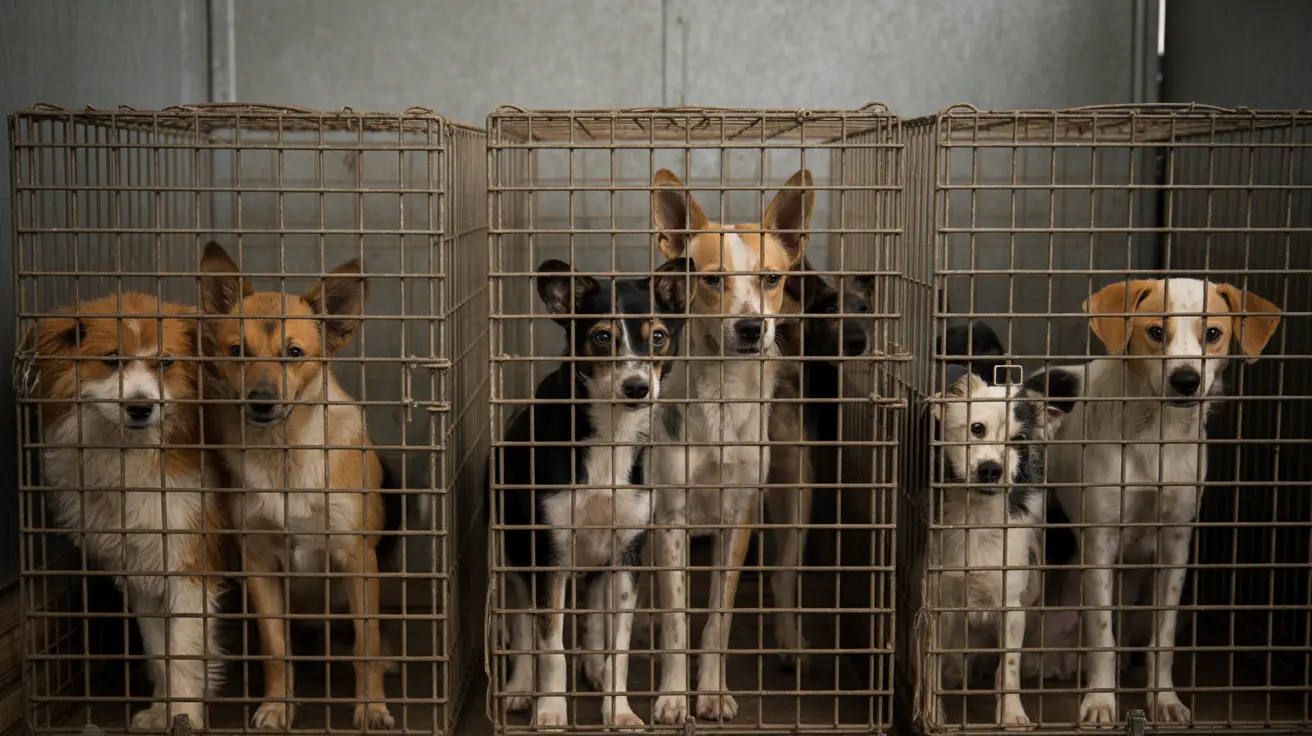What is Cerebellar Hypoplasia?
Cerebellar hypoplasia in dogs is a neurological condition that occurs when the cerebellum - the part of the brain responsible for coordination and balance - fails to develop fully before birth. This condition typically becomes apparent in puppies around 2-3 weeks of age when they begin attempting to walk and coordinate their movements.
While the condition might sound alarming to pet parents, it's important to understand that cerebellar hypoplasia is non-progressive, meaning it doesn't worsen over time. Many dogs with this condition can lead happy, fulfilling lives with proper care and environmental modifications.
Causes and Risk Factors
Several factors can contribute to the development of cerebellar hypoplasia in dogs:
Genetic Factors
Some dog breeds show a higher predisposition to cerebellar hypoplasia, suggesting a genetic component. Breeds like Chow Chows, Boston Terriers, and Staffordshire Bull Terriers appear to be more commonly affected.
Viral Infections
One of the primary causes is viral infection during pregnancy, particularly the canine parvovirus. When a pregnant dog contracts certain viruses, they can interfere with the proper development of the puppy's cerebellum.
Environmental Factors
Exposure to toxins, certain medications, or lack of oxygen during pregnancy can also lead to incomplete cerebellar development. Sometimes, physical trauma during pregnancy might contribute to this condition.
Recognizing the Signs and Symptoms
The most common signs of cerebellar hypoplasia include:
- Uncoordinated, wobbly gait
- Head tremors that worsen with intentional movement
- Difficulty maintaining balance
- Wide-based stance
- Exaggerated, high-stepping movements
- Challenges with basic activities like eating and drinking
Diagnosis and Treatment Options
Veterinarians diagnose cerebellar hypoplasia through a combination of clinical observation, neurological examination, and advanced imaging techniques like MRI or CT scans. While there's no cure for the condition, proper management can help affected dogs live comfortable lives.
Management Strategies
Key approaches to managing cerebellar hypoplasia include:
- Creating a safe environment with non-slip surfaces
- Installing ramps instead of stairs
- Using protective padding in areas where the dog frequently moves
- Regular physical therapy exercises
- Maintaining a consistent routine
Living with Cerebellar Hypoplasia
Dogs with cerebellar hypoplasia often develop remarkable coping mechanisms over time. Many learn to navigate their environment effectively, though they may never achieve completely normal coordination. With patient training and appropriate accommodations, these dogs can participate in most regular activities.
Frequently Asked Questions
What are the common signs and symptoms of cerebellar hypoplasia in puppies?
The most common signs include unsteady gait, head tremors, difficulty balancing, and coordination problems. These symptoms typically become noticeable when puppies begin walking at 2-3 weeks of age.
How is cerebellar hypoplasia diagnosed in dogs, and can it be confused with other neurological conditions?
Diagnosis involves neurological examination and imaging tests like MRI or CT scans. The condition can be confused with other neurological disorders, which is why proper veterinary evaluation is crucial for accurate diagnosis.
What causes cerebellar hypoplasia in dogs, and are some breeds more at risk?
The condition can be caused by genetic factors, viral infections during pregnancy, toxin exposure, or oxygen deprivation. Some breeds, including Chow Chows and Boston Terriers, show higher predisposition.
How can I care for and support a dog living with cerebellar hypoplasia to improve their quality of life?
Focus on creating a safe environment with non-slip surfaces, using protective padding, installing ramps, and maintaining consistent routines. Regular physical therapy and patience in training can help dogs adapt better.
Can dogs with cerebellar hypoplasia live a normal lifespan, and what adaptations can help them stay safe and mobile?
Yes, dogs with cerebellar hypoplasia can live normal lifespans. Key adaptations include modified living spaces, supportive equipment like harnesses, and regular exercise to maintain strength and coordination.
Conclusion
While cerebellar hypoplasia presents challenges for affected dogs and their owners, understanding the condition and implementing appropriate management strategies can lead to positive outcomes. With proper care, patience, and environmental modifications, dogs with this condition can lead happy, fulfilling lives.






